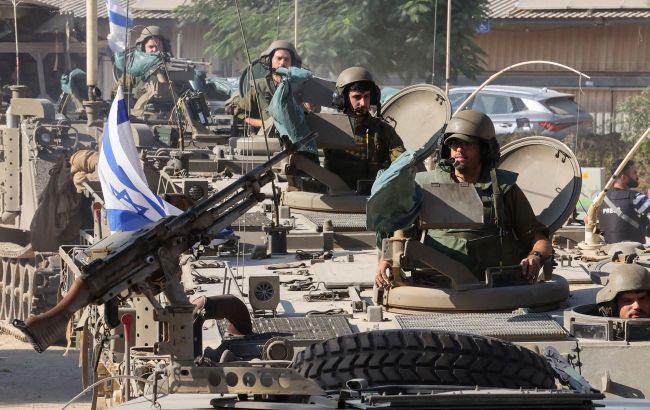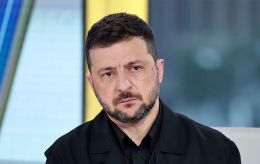Israel destroys Iranian missile plant during ground operation in Syria
 Israeli army (Getty Images)
Israeli army (Getty Images)
Earlier this week, an underground missile plant built by Iran was destroyed in Syria during a ground operation by the Israel Defense Forces (IDF), citing Axios.
First ground operation by IDF in Syria in years
According to three sources familiar with the situation, an elite unit of the IDF carried out an unusual raid in Syria, destroying an underground precision missile production facility. Israel and the US claim that the plant was built by Iran.
Axios reports that Israeli airstrikes on Syria intensified after Hamas attacked Israel on October 7. However, the raid on Sunday marked the first ground operation by the IDF against Iranian targets in Syria in years.
The destruction of the plant appears to have dealt a significant blow to Iran and Hezbollah's efforts to produce medium-range precision missiles on Syrian soil.
Sources mentioned that the Israeli government remained "unusually silent" about the event and did not take responsibility to avoid provoking retaliation from Syria, Iran, or Hezbollah.
What happened in Syria before plant was destroyed
On the evening of Sunday, September 8, Syrian state media and opposition organizations reported massive Israeli Air Force strikes. They targeted several areas in western Syria, including near the city of Masyaf, close to the Lebanese border.
Syrian media reported that at least 16 people were killed, and 40 others were injured. The media condemned the airstrikes as "blatant aggression," a sentiment echoed by Iran’s Foreign Ministry, which called the attack "criminal."
On Wednesday, September 11, a Syrian opposition TV channel and Greek Middle East expert Eva Koulouriotis reported that the airstrikes were a cover for an IDF ground operation in Masyaf.
In turn, three sources informed about the operation confirmed to Axios that an elite Israeli Air Force unit, Shaldag, carried out the raid and destroyed the facility.
Israel informed US about attack
Two sources reported that Israel informed the administration of US President Joe Biden about the sensitive operation in advance, and the US did not object. The White House provided no comments to the agency.
How plant was destroyed
Axios reports that Israeli special forces caught Syrian guards off guard at the facility, killing several during the raid. One source specified that no Iranians or Hezbollah militants were harmed.
According to two other sources, the commandos used explosives they brought with them to blow up the underground facility from the inside, including its sophisticated equipment.
An Axios source added that the purpose of the airstrikes was to prevent Syrian forces from sending reinforcements to the area where the underground plant was located.
When plant was built
Two sources with direct knowledge of the matter told Axios that the Iranians began constructing the underground facility in cooperation with Hezbollah and Syria in 2018 after a series of Israeli airstrikes destroyed much of Iran’s missile production infrastructure in Syria.
According to the sources, the Iranians decided to build the underground plant deep inside a mountain in Masyaf, believing it would be impenetrable to Israeli airstrikes.
The sources claim Iran planned to manufacture precision missiles at the protected facility near the Lebanese border so that supplies to Hezbollah in Lebanon could be carried out quickly and with less risk of Israeli airstrikes.
In turn, Israeli intelligence discovered the construction process and monitored it for over five years under the codename "Deep Layer." The Israelis realized that they could not destroy the facility with an airstrike and would need a ground operation.
According to one source, the Israeli military considered conducting such an operation at least twice in recent years but did not approve it due to the high risk involved.
Earlier, RBC-Ukraine reported that, according to Syrian state media, at least four civilians were killed in Israeli attacks on the countryside of Hama, Syria, on Sunday. Sources said the attack targeted a major military research center.

